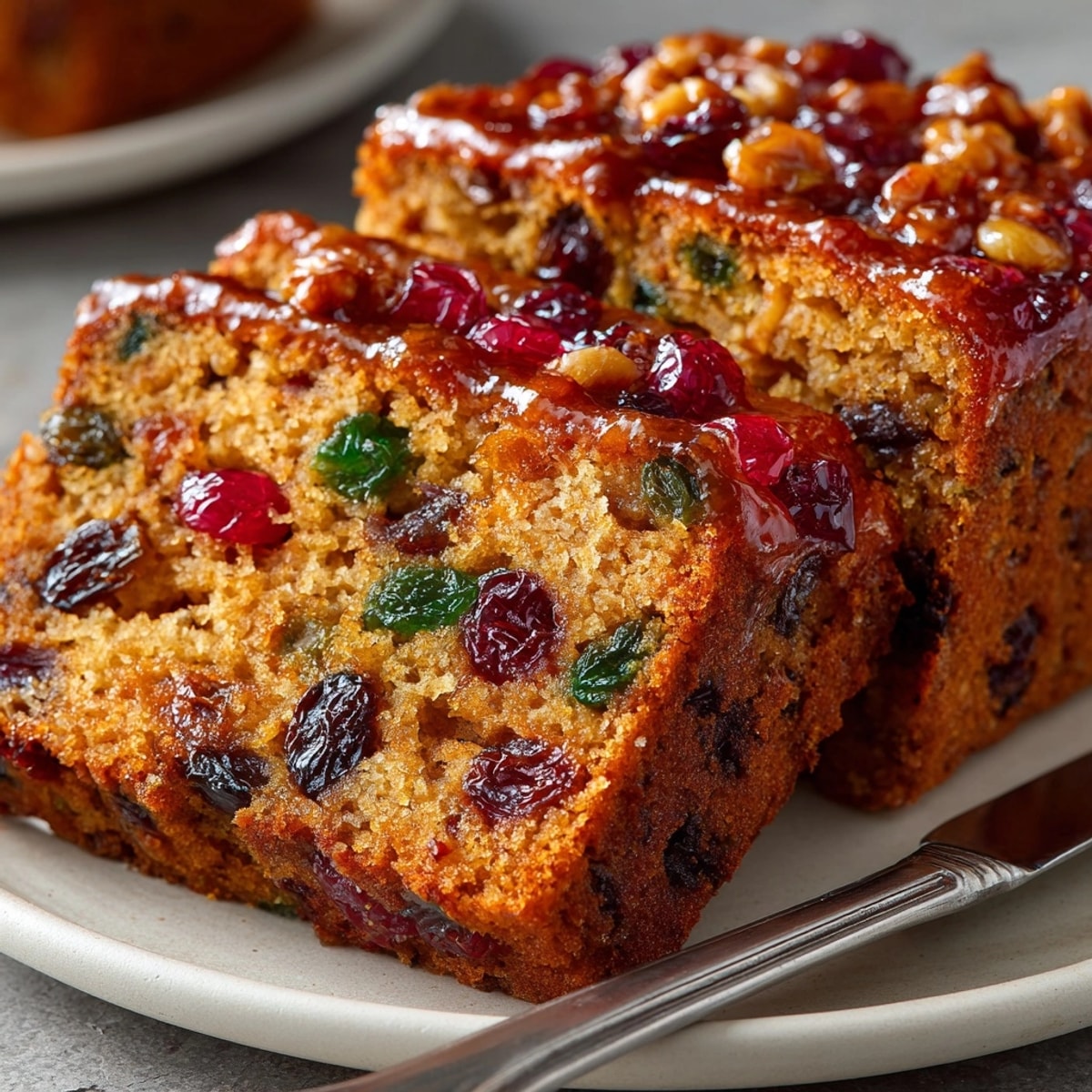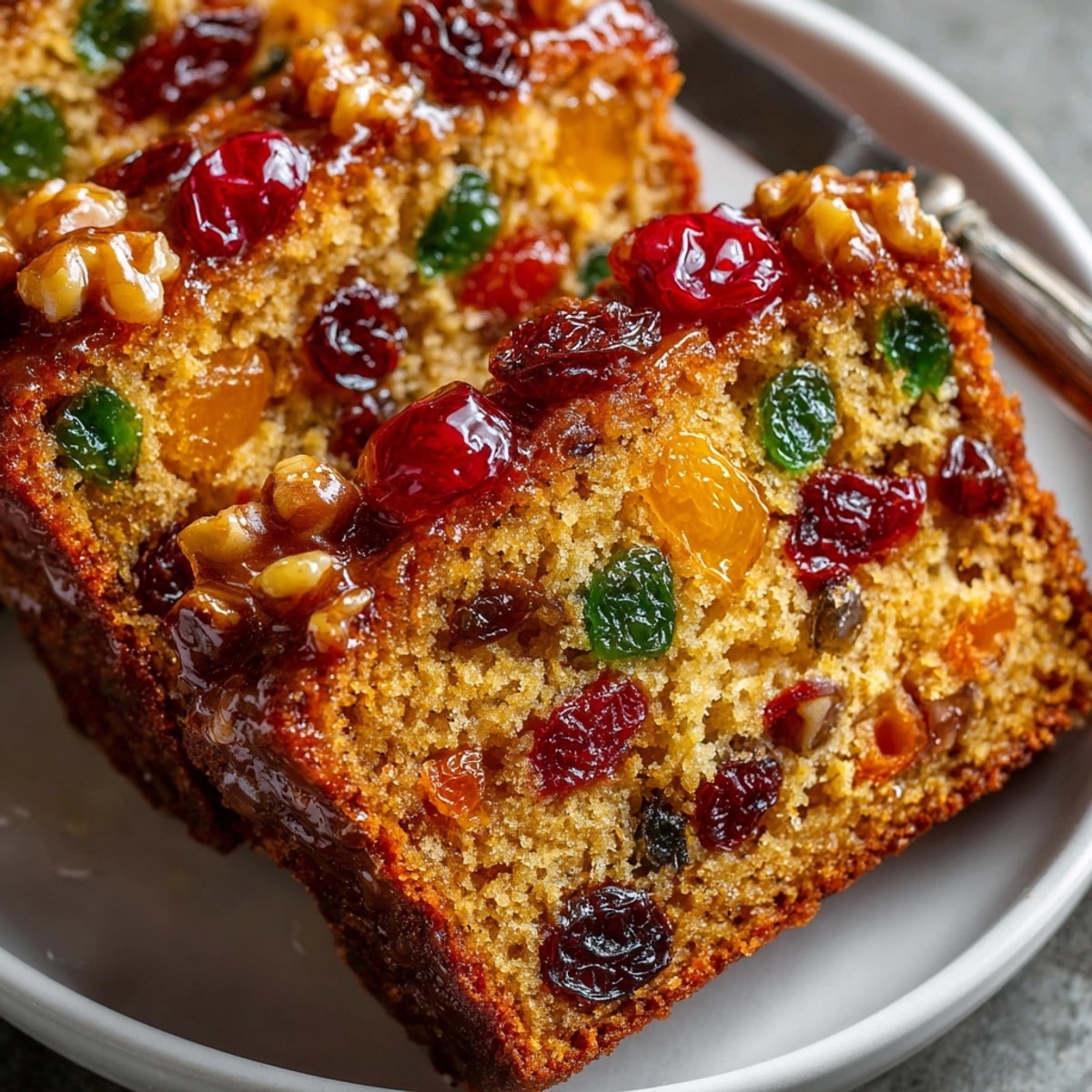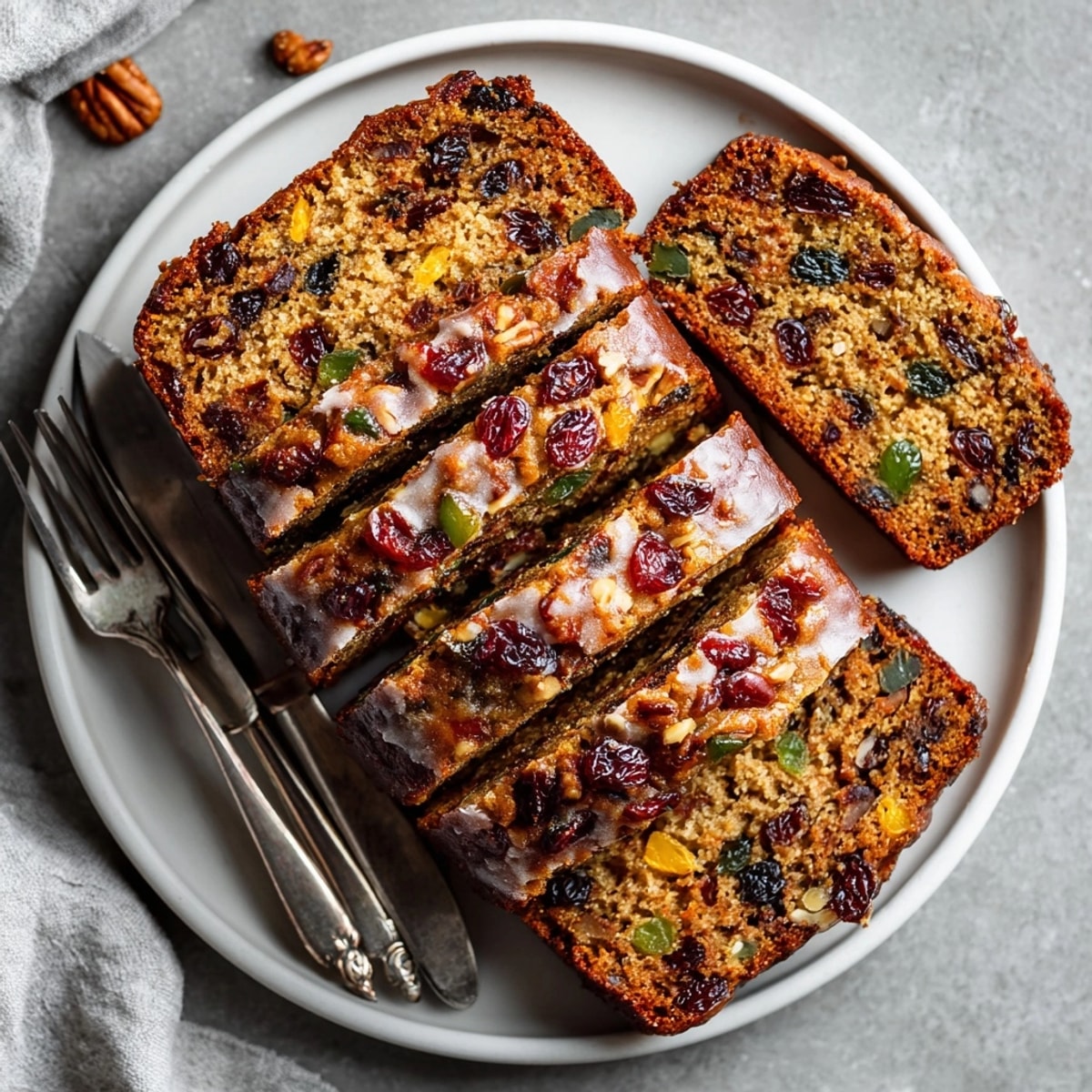 Pin
Pin This aromatic mulled wine-spiced fruitcake loaf transforms ordinary dried fruits into a festive masterpiece. The fruits soak in spiced wine until plump and flavorful, creating a moist, richly textured cake that improves with time. I've been making this recipe every December for years, and it never fails to fill my home with the most enchanting holiday aromas.
I first created this recipe when looking for ways to use leftover mulled wine from a holiday gathering. What started as an experiment quickly became a tradition, with friends now requesting it as their annual Christmas gift.
Ingredients
- Dry red wine: provides the base flavor for soaking dried fruits choose a medium bodied variety like Merlot or Cabernet
- Light brown sugar: adds caramel notes that complement the dried fruits
- Whole spices: cinnamon cloves star anise and nutmeg create that classic mulled wine flavor profile
- Orange zest: brightens the entire cake with essential oils that infuse during soaking
- Mixed dried fruits: use a combination of raisins currants cherries cranberries and apricots for varied texture and flavor
- Unsalted butter: provides richness and tender crumb structure
- Allspice: adds warmth that enhances the mulled wine flavors
- Toasted nuts: optional but add wonderful texture contrast to the soft fruits
- Orange marmalade: creates a beautiful glossy finish and adds another layer of citrus flavor
Instructions
- Prepare the mulled wine soaking liquid:
- Combine wine, brown sugar, cinnamon stick, cloves, star anise, nutmeg, and orange zest in a saucepan. Heat gently until just simmering and the sugar completely dissolves. This creates an aromatic infusion that will permeate the dried fruits. The gentle heat helps the spices release their essential oils more effectively than cold soaking.
- Soak the dried fruits:
- Add your mixed dried fruits to the hot spiced wine mixture, then remove from heat immediately. Cover the pan and allow the fruits to soak for at least 2 hours, though overnight produces the most flavorful results. The fruits will plump up dramatically as they absorb the spiced wine, nearly doubling in size and becoming incredibly juicy.
- Prepare your baking pan:
- Preheat your oven to 160°C (320°F) and prepare your loaf pan by thoroughly greasing it and lining with parchment paper. Leave some overhang on the long sides to create handles that will help you lift the finished cake out cleanly. This prevents the fruit-heavy batter from sticking to the pan.
- Drain and prepare soaked fruits:
- Strain the fruits, reserving exactly 60ml of the soaking liquid for the batter. Pick out and discard the whole spices and orange zest pieces. The strained fruits should look plump and glossy, having absorbed much of the liquid and flavor.
- Cream butter and sugar:
- In a large bowl, beat the softened butter and brown sugar until light and fluffy, about 3-4 minutes. This incorporates air into the batter for a lighter texture. Make sure your butter is truly at room temperature for proper creaming.
- Add eggs and vanilla:
- Beat in eggs one at a time, fully incorporating each before adding the next. This prevents the mixture from curdling. Add vanilla extract and mix well. The mixture may look slightly curdled at this point, but will smooth out when the dry ingredients are added.
- Combine dry ingredients:
- In a separate bowl, whisk together the flour, baking powder, salt, and allspice until evenly distributed. This ensures the leavening and spices will be evenly distributed throughout the cake.
- Create the batter:
- Gradually add the dry ingredients to the butter mixture, alternating with the reserved mulled wine liquid. Begin and end with the dry ingredients, mixing just until combined after each addition. Overmixing will develop gluten and make the cake tough.
- Fold in fruits and nuts:
- Using a spatula, gently fold in the drained fruits and nuts if using. The batter will be quite thick and studded with fruit. Take care not to crush the fruits while ensuring they're evenly distributed throughout the batter.
- Bake the loaf:
- Transfer the batter to your prepared loaf pan and smooth the top with a spatula. Bake for approximately 70-75 minutes, or until a skewer inserted into the center comes out clean. If the top begins to brown too quickly, cover loosely with foil after about 45 minutes of baking.
- Apply optional glaze:
- After cooling in the pan for 10 minutes, transfer to a wire rack. While still warm, brush the top with warmed orange marmalade or apricot jam if desired. This creates a beautiful sheen and adds another layer of flavor.
- Cool completely:
- Allow the cake to cool completely before slicing, ideally for at least 2 hours. For the best flavor, wrap the cooled cake in parchment paper and then foil, and let it mature for 1-2 days before serving.
 Pin
Pin The star anise in this recipe is my secret weapon. While traditional fruitcakes often rely on mixed spice blends, the distinctive licorice notes from star anise add unexpected depth that makes people ask for the recipe. I discovered this by accident when running low on cinnamon one year and have never made it without star anise since.
Storage Tips
This fruitcake loaf keeps exceptionally well due to its moisture content from the wine-soaked fruits. For short-term storage of 3-5 days, wrap tightly in parchment paper and then aluminum foil, keeping at room temperature. The flavors will continue to develop and improve during this time.
For longer storage up to two weeks, place the wrapped cake in an airtight container in the refrigerator. Allow it to come to room temperature before serving for the best flavor and texture experience.
If you want to extend the life even further, this cake freezes beautifully for up to three months. Wrap the completely cooled cake in a double layer of plastic wrap and then aluminum foil before freezing. Thaw overnight in the refrigerator while still wrapped.
Serving Suggestions
Transform this humble loaf into an elegant dessert by warming slices slightly and serving with a dollop of mascarpone cheese or lightly sweetened whipped cream. The creamy richness provides a beautiful contrast to the spiced fruit flavors.
For a truly decadent experience, try slicing the cake, toasting it lightly, and spreading with good quality salted butter. The heat releases the aromatic spices while creating a slightly crisp exterior and warm, tender interior.
This cake also pairs wonderfully with after-dinner drinks. Serve alongside a glass of port, sweet sherry, or even more mulled wine for a festive holiday dessert board that will impress guests.
Ingredient Substitutions
If you prefer an alcohol-free version, substitute the red wine with the same amount of pomegranate or cranberry juice mixed with a tablespoon of balsamic vinegar for depth. The flavor profile will be different but equally delicious.
The dried fruit mixture is entirely customizable. While traditional fruitcake often includes candied peel, this recipe works beautifully with any combination of dried fruits. Try dried figs, dates, or even dried blueberries for interesting variations.
For a gluten-free adaptation, substitute the all-purpose flour with a high-quality gluten-free baking blend that contains xanthan gum. The moisture from the fruits helps prevent the dryness that sometimes affects gluten-free baked goods.
Seasonal Adaptations
For summer version substitute red wine with rosé and use more seasonal dried fruits like apricots and peaches
In autumn incorporate dried apple pieces and increase the cinnamon for a harvest flavor profile
During spring holidays add candied citrus peel and a touch of almond extract for brightness
 Pin
Pin This fruitcake loaf keeps exceptionally well due to its moisture content from the wine-soaked fruits. For short-term storage of 3-5 days, wrap tightly in parchment paper and then aluminum foil, keeping at room temperature.